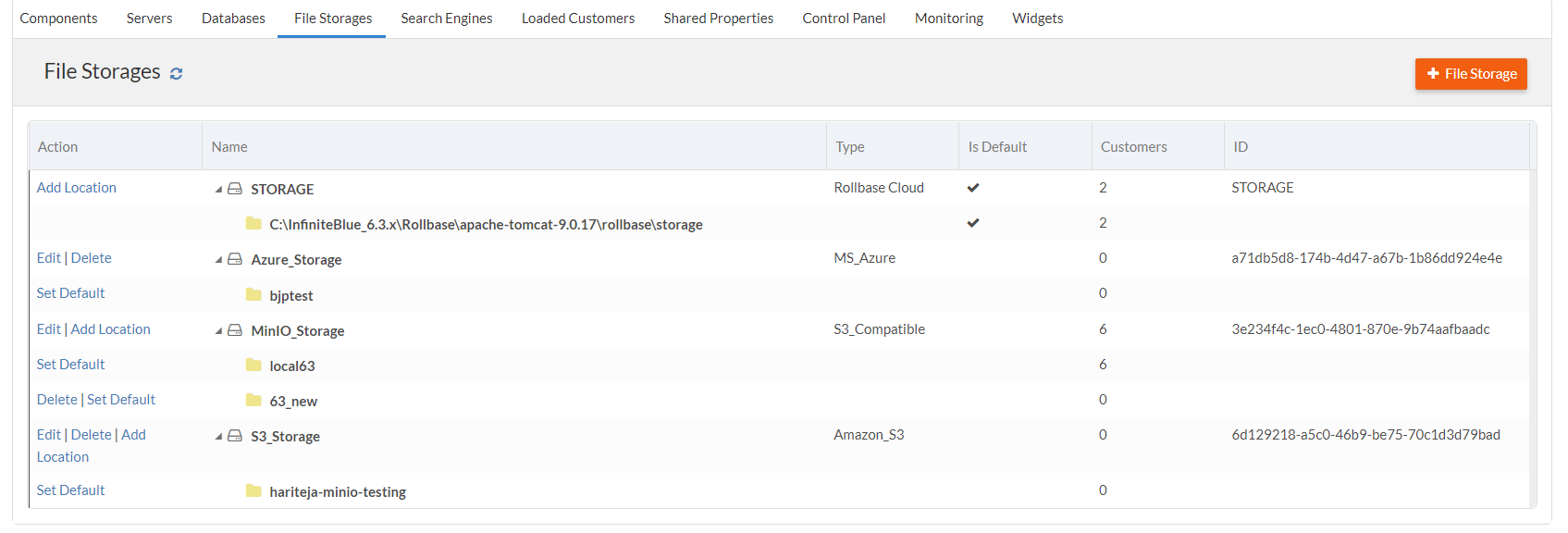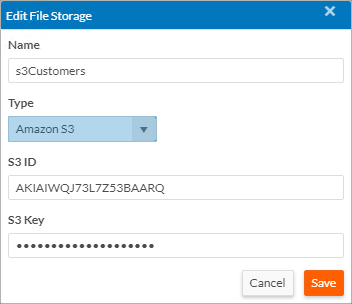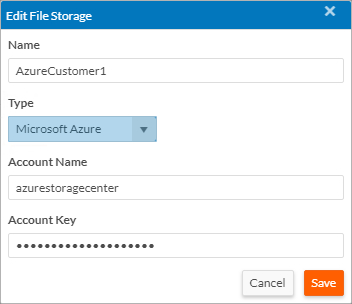File Storages
This page displays an entire list of all the File Storages available in Platform to the administrator.
Access the File Storages tab from the Application Switcher > System Console > System.
On the File Storages tab, list of all the File Storages and it's respective location(s) are displayed in a two-level view. The table comprises the columns as mentioned below:
- Action: The actions pertaining to the File Storages and it's respective location(s)..
- Name: The name of the file storage and the storage location(s). An Error Icon is shown if the storage location is unaccessible.
- Type: The type of file storage - Platform Cloud, Amazon S3, S3 Compatible Storage, or Microsoft Azure.
- Is Default: The File Storage and the corresponding location(s) appear with Tick mark icons if set as default.
- Customers: The number of customers assigned to the storage location and the file storages (cumulative).
- ID: The unique ID of the file storage used while creating a customer using API (REST/SOAP) methods.

Actions
Below are the list of actions pertaining to the File Storages.
| Action | Description |
|---|---|
| Edit | You can edit the attributes of the file storages. |
| Delete | You can delete the files storages from the list available in the
File Storage tab. Note: Delete
option is unavailable if:
|
| Add Location | You can add a location to the file storages. Applicable to Platform Cloud, Amazon S3, and S3 Compatible Storage only. |
Below are the list of actions pertaining to the storage location.
| Action | Description |
|---|---|
| Set Default | You can set the storage location as default. |
| Delete | You can delete any storage location. Note: Delete option is
unavailable if:
|
You can perform the following operations in this page:
Refresh
The list of file storages is refreshed on the click of Refresh icon on the top of the table.
Add a File Storage
Platform comes with a default Platform Cloud type of file storage. To enhance the file storage capabilities, Platform supports adding Amazon S3, S3 Compatible Storage, and Microsoft Azure type of file storages.
To add a File Storage:
- Click the + File Storage button on the top right side of the browser under the File Storages tab. The Add File Storage dialog opens.
- Configure the below values as needed and Save.
File Storage Description Name You can add a file storage name here. Type You can choose the type of file storage to be added between Amazon S3, S3 Compatible Storage, or Microsoft Azure. If you have chosen Amazon S3 as the file storage type, you are required to enter the S3 ID, S3 Key and S3 Bucket. If you have chosen Microsoft Azure as the file storage type, you are required to enter the Account Name and Account Key. If you have chosen S3 Compatible Storage as the file storage type, you are required to enter the S3 ID, S3 Key , S3 Bucket, and S3 Compatible URL. Is Default Select the Is Default to set the file storage as the default.

- If you are migrating to 5.4 from an older version of Platform, a master entry of the file storage is listed in the table. The master entry is suffixed with type of file storage. For example: Master_S3, if the file storage in the older version was Amazon S3 type of file storage.
- Post migration, the customers count in the File Storage tab is updated based on the allocation of the existing storage location.
- For ISV Partner and System Console applications, under the
customer objects, it is recommended to delete the fields (
S3 Bucket,S3 ID/Account Name,S3 Key/Account Key,Cloud Storage) due to security reasons. The mentioned fields are no longer required by the system.
Edit a File Storage
You can also edit an existing file storage available in the File Storages tab.
To edit a File Storage:
- Click Edit under the Action column of the File Storage tab. The Edit File Storage dialog opens.
- Configure the below values as needed and Save.
File Storage Description Name You can update the file storage name here. For Amazon S3 file storage type, you can update the S3 ID and S3 Key. For Microsoft Azure file storage type, you can update the Account Name and Account Key. For S3 Compatible Storage file storage type, you can update the S3 ID ,S3 Key, and S3 Compatible URL.



Adding Location to a File Storage
You can add a location to the File Storages (Platform Cloud/Amazon S3/S3 Compatible Storage) and make it as a default.
To add a location to the File Storage:
- Click Add Location under the Action column of the File Storage tab for the File Storages. The Add Location dialog opens.
- In the Location field, enter the location for the file storage. In the case of Amazon S3 or S3 Compatible Storage type of file storage, enter a valid bucket name.
- Select Is Default to set the location as default and Save.

- You can add as many locations to a file storage. Ensure that the folder location is available and accessible before adding any location to the file storage.
- Add Location is not applicable for Azure type of file storage.

